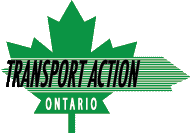High Speed Rail Canada’s verdict on VIA’s High Frequency Rail proposal: a mystery inside an enigma. TAO proposes High Performance Rail option.
By Transport Action Ontario | Intercity Rail and Bus , Latest News
On January 26, 2017, Paul Langan wrote on the High-Speed Rail Canada group’s website, “One thing has been constant about VIA RAIL in my over thirty years of rail advocacy. Their secrecy and arrogance to the taxpayers and the advocates that support them has not waivered.” The most recent example cited by Langan is VIA’s High Frequency Rail (HFR) plan for a new dedicated track in the Toronto-Ottawa-Montreal triangle needed, VIA says, because CN freights often block its trains.
VIA’s proposal is about express trains serving the three triangle cities. At a low-balled cost of $4 billion, new conventional track would be constructed for express trains traveling in the 90 to 110 mph range (145 – 180 km/h) built amazingly quickly in just four years. Langan is asking for the details mentioning that the full details of a very similar 2002 proposal called VIAFast have never been released. Langan notes that the HFR route being proposed is the old Ontario and Quebec Railway (later Canadian Pacific) through Peterborough, Havelock, Tweed, Perth and Smith Falls abandoned by CP 100 years ago because of curves and steep grades.
Transport Action Ontario (TAO) opposes VIA’s HFR plan. It is the wrong investment to make at a time when central and southwest Ontario are so seriously deficient in intercity public transportation connectivity. The alternative is High Performance Rail (HPR) widely found in the U.S.
HPR is defined by its multiple service attributes, including frequency, low ticket price, comfort, all-weather reliability, on-time performance, and integration with other public transportation services. Imagine if GO trains were operated in longer distance intercity service with more comfortable seating.
Not originally in the HFR plan, apparently VIA woke up late to the fact that there’s a considerable population in eastern Ontario – cities such as Belleville and Kingston. VIA has now told these cities they will not be left behind. Once the dedicated backwoods line is built, there will be hourly trains on the Lakeshore with Kingston a hub offering some connecting trains heading further east. Details are sketchy or missing.
The federal government has already invested hundreds of millions of taxpayers’ dollars upgrading CN’s Kingston subdivision to separate freight and passenger train movements east of Toronto. The few remaining bottlenecks can be similarly eliminated with public funds. This would free up the Lakeshore route for both express and hourly stopping trains. Connectivity would be enhanced by continuing Kingston’s present hub role. At Kingston, passengers would have access to both the express and stopping trains to and from Smith Falls and Ottawa and to Brockville, Cornwall and Montreal. It would also free up capital for investment in bi-level passenger cars that would provide comfortable, reliable, easy and quick boarding, and the extra passenger capacity that is the hallmark of the mass public transportation HPR model.
Instead of wasting time studying VIA’s technically challenging, commercially questionable HFR plan, the federal and provincial governments should be considering the benefits of an enhanced Ontario-Quebec international trade corridor. Rather than continued provincial ad-hoc expenditures on self-defeating highway widenings and expansions, the focus should be on a substantial expansion of rail capacity for freight and passengers through partnerships between governments, freight railways, and passenger train operating agencies. Expanding freight and passenger traffic capacity and raising speeds safely in the Windsor-Montreal corridor is in everyone’s interest. (February 7, 2017)
Sources: www.highspeedrailcanada.com; see blog entries and press releases dated Nov. 9, 2015, Aug. 6, 2016, Jan. 26, 2017, and Jan. 31, 2017.

